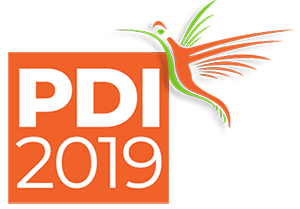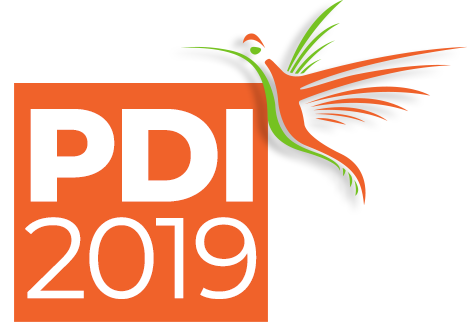Prof. Dr. Tsatsakis Aristidis


PhD, ERT, DSc, FATS, DHonC, DHonC, DHonC, HonProf, FMRAS and FMWAS
Professor and Chairman Department of Toxicology & Forensic Science, Medical School, University of Crete
Real life risk simulations (RLRS) in Safety Toxicology: Another Challenge for Precision Medicine
Author: Aristidis Tsatsakis, PhD, ERT, DSc
ABSTRACT:
Risk assessment for human protection is historically and up to nowadays based on some long-established practices and assumptions for hazard identification and characterisation, such as a) testing in high doses, b) testing only of single chemicals, and c) linear extrapolation to low doses. Though these practices were considered handy and useful for many decades, it is now globally recognised that they are not simulated real life conditions. Real life risk is coming from the exposure to complex mixtures of many different chemicals and their toxicity in mixtures might be altered in relation of their toxicity when studied in isolation. In addition, real life exposure is mainly exposure to low doses. However, the assumption that low dose’s toxicity is covered from experimentation in high doses because all effects are following a linear and monotonic dose-response curve, is seriously challenged through a number ofstudies of the last three decades. As many of the technical drawbacks of the past are nowadays eliminated and new technologies and methodologies are available, we consider that it is time to go ahead with toxicology for Real Life Risk Simulation. As more are known in relation to real life combined exposure, we focus our research in an area with complete lack of data, meaning the low-dose-long-term toxicity testing of complex chemicals’ mixtures that simulates real life exposure. The Toxicology of the 21st century faces with the challenge of explain why from epidemiological studies we found that chemicals in doses consider safety are important factors that lead to the development of different chronic diseases. Precision medicine approach based on metabolome, genome, and microbiome relate data on the effect of toxic exposure to the phenotype. Toxic exposure inflicts damage at metabolic, genetic and microbiome levels, increasing thus cellular turnover, telomere attrition and the rate of aging. Data from our ongoing research in this direction will be presented.
SHORT CV
Aristides Tsatsakis is the Director of the Department of Toxicology and Forensic Sciences of the Medical School at the University of Crete and the University Hospital of Heraklion and also the Chairman of the Division of Morphology of the Medical School of the University of Crete in Greece.
He served as President of the Federation of European Toxicologists and European Societies of Toxicology (EUROTOX) from 2014 through 2016. Dr. Tsatsakis is a member of the Russian Academy of Sciences (RAS) and a member of the World Academy of Sciences (FMWAS). Under his direction, many studies and research projects were performed focusing on the development and improvement of new methods for the analysis of xenobiotics, biomonitoring and recording of their acute and long-term effects on human health, the use of macromolecular systems in nanomedicine and nanotoxicology as carriers for targeting and reducing toxicity and the examination of the length of telomeric ends in cellular aging and their association with chronic diseases.
He is an Emeritus Professor for the Federal Institute of Hygiene and Toxicology in Moscow (2014) and has a Doctor Honoris Causa of the D. Mendeleev University of Chemical Technology of Russia (2016), of the Far Eastern Federal University(FEFU), Vladivostok 2017 and of the University of Medicine and Pharmacy “Carol Davila” (2017). His work consists of over 1000 publications (articles in journals, books and abstracts proceedings), more than 500 of them in ISI journals, he has given over 200 keynote and plenary lectures in international congresses and has been the promoter, organizer and chair of numerous International congresses, symposiums and workshops. As a principal investigator (PI) he has coordinated over 60 scientific research and technology projects and has established worldwide collaborations.
He is the holder of numerous patents and has an extensive array of citations (over 11,000 Google Scholar) and reads/downloads (over 80,000 Research Gate) of his papers. His current impact factor (IF) index is 51 (GS) and 43 (ISI) and has a long standing activity as an Editor in toxicology journals. Currently he is the Editor in Chief for Toxicology Reports and an editor for Food and Chemical Toxicology and was an editor and guest editor in many other journals, i.a. Toxicology, Food and Chemical Toxicology and Toxicology Letters, Experimental Therapeutic Medicine.
His most current significant research approach is based on interpreting “real-life human exposure” scenarios based on a long-term, low-dose exposure to chemical mixtures as well as “real-life risk simulation” (RLRS) studies.
Contactează operatorul PDI 2019
Operatorul PDI 2019
Adresa: Str. A. Panu nr. 13, Iasi
Tel.: 0332.40.88.00-05
E-mail: inscrieri@pdi.ro/2019
Website: www.eventernet.ro
